
The Great Giana Sisters is a platform game developed by the West German company Time Warp and published by Rainbow Arts in 1987 for various home computers such as the Commodore 64, Amiga and Atari ST. Players control Giana, or her sister Maria in the multiplayer mode, to explore a magical world inside their dreams. The two seek out a giant diamond to awaken from their dream. They traverse side-scrolling stages while avoiding hazards such as monsters and other enemies with the aid of power-ups grant them various abilities such as firing projectiles and making enemies fall asleep.
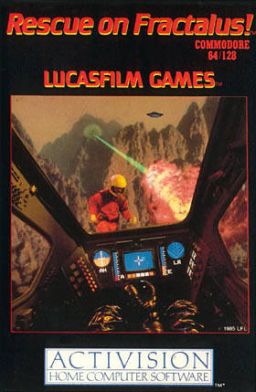
Rescue On Fractalus! is a space combat simulator video game created by Lucasfilm Games. It was originally released in 1985 for the Atari 8-bit computers and Atari 5200 console, then ported to the Apple II, ZX Spectrum, Amstrad CPC, Tandy Color Computer 3, and Commodore 64. The player flies a space fighter near the surface of a planet, with the goal of rescuing downed pilots. The terrain is generated via fractals, from which the eponymous planet and game title are taken.

Wonder Boy in Monster Land, known by its original arcade release as Wonder Boy: Monster Land, is a platform video game developed by Westone Bit Entertainment and released by Sega in Japanese arcades in 1987 and for the Master System in 1988, with a number of other home computer and console ports following. The game is the sequel to the 1986 game Wonder Boy and takes place eleven years after the events in the previous game. After enjoying over a decade of peace on Wonder Land following the defeat of the evil King by Tom-Tom, later bestowed the title "Wonder Boy", a fire-breathing dragon called the MEKA dragon appeared; he and his minions conquered Wonder Land, turning it into "Monster Land". The people, helpless due to their lack of fighting skill, call for Wonder Boy, now a teenager, to destroy the monsters and defeat the MEKA dragon. Players control Wonder Boy through twelve linear levels as he makes his way through Monster Land to find and defeat the MEKA dragon. Players earn gold by defeating enemies and buy weapons, armor, footwear, magic, and other items to help along the way.

Lode Runner is a 2D puzzle-platform game, developed by Doug Smith and published by Broderbund in 1983. Its gameplay mechanics are similar to Space Panic from 1980. The player controls a character who must collect all the gold pieces in a level and get to the end while being chased by a number of enemies. It is one of the first games to include a level editor.

Paperboy is an arcade action game developed and published by Atari Games, and released in 1985. The player takes the role of a paperboy who delivers a fictional newspaper called The Daily Sun along a street on his bicycle. The arcade version of the game featured bike handlebars as the controller.

Kung-Fu Master, known as Spartan X in Japan, is a side-scrolling beat 'em up developed by Irem as an arcade video game in 1984, and distributed by Data East in North America. Designed by Takashi Nishiyama, the game was based on Hong Kong martial arts films. It is a loose adaptation of the Jackie Chan, Sammo Hung, and Yuen Biao film Wheels on Meals (1984), called Spartan X in Japan, with the protagonist Thomas named after Jackie Chan's character in the film. The game is also heavily inspired by the Bruce Lee film Game of Death (1972), which was the basis for the game's concept. Nishiyama, who had previously designed the side-scrolling shooter Moon Patrol (1982), combined fighting elements with a shoot 'em up gameplay rhythm. Irem and Data East exported the game to the West without the Spartan X license.

Commando, released as Senjō no Ōkami in Japan, is a vertically scrolling run and gun video game released by Capcom for arcades in 1985. The game was designed by Tokuro Fujiwara. It was distributed in North America by Data East, and in Europe by several companies including Capcom, Deith Leisure and Sega, S.A. SONIC. Versions were released for various home computers and video game consoles. It is unrelated to the 1985 film of the same name, which was released six months after the game.
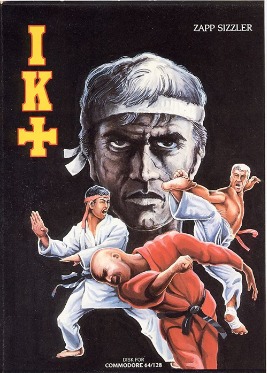
International Karate +, stylized as IK+, is a fighting game written by Archer Maclean and published in 1987 by System 3 for the Commodore 64, Amstrad CPC, and ZX Spectrum. It is a successor to International Karate (1985). Activision published the Commodore 64 version in the US as Chop N' Drop.

The Blues Brothers is a platform game based on the band The Blues Brothers, where the object is to evade police and other vigilantes to get to a blues concert. The game was released for IBM PC, Amstrad CPC, Amiga, Commodore 64, and Atari ST in 1991, and for the NES and Game Boy in 1992. It was created by Titus France. A sequel, The Blues Brothers: Jukebox Adventure, was released for the SNES in 1993 and for IBM PC compatibles and the Game Boy in 1994. The theme music of the video game is an electronic arrangement of Peter Gunn. Zzap!64 ranked the Commodore 64 port the eighth-best all-time Commodore 64 game in 1993, and the game was the best platformer for PC, Atari ST and Amiga consoles of 1991 of Zero journalist David Wilson.

Flimbo's Quest is a 2D platform game published by British publishing house System 3 for the Commodore 64, Amiga, Atari ST and Amstrad CPC. A ZX Spectrum version was produced but never released. The game itself was developed by Laurens van der Donk in the Netherlands who was involved in the demoscene being in both Boys Without Brains (BWB) and Hotline.

Xenon 2: Megablast is a 1989 shoot 'em up video game developed by The Bitmap Brothers and published by Image Works for the Amiga and Atari ST. It was later converted to the Master System, PC-98, X68000, Mega Drive, Commodore CDTV, Game Boy, Acorn Archimedes and Atari Jaguar platforms. The game is a sequel to Xenon and takes place a millennium after the previous title. The goal of the game is to destroy a series of bombs planted throughout history by the Xenites, the vengeful antagonists of the first game.
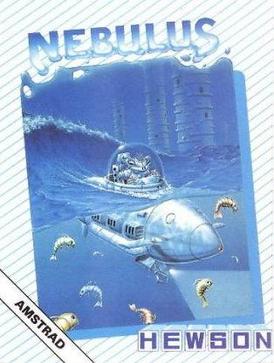
Nebulus is a platform game created by John M. Phillips and published by Hewson Consultants in the late 1980s for home computer systems. International releases and ports were known by various other names: Castelian, Kyorochan Land, Subline, and Tower Toppler.
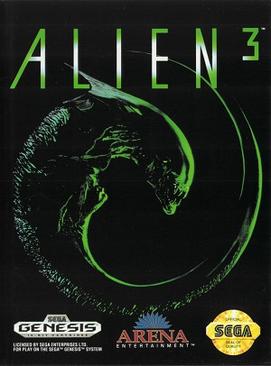
Alien 3 is a run and gun game based on the 1992 film of the same name. It was released for the Genesis and Amiga in 1992, then for the Commodore 64, Game Boy, Game Gear, Nintendo Entertainment System, Super Nintendo Entertainment System, and Master System.
A side-scrolling video game is a game viewed from a side-view camera angle where the screen follows the player as they move left or right. The jump from single-screen or flip-screen graphics to scrolling graphics during the golden age of arcade games was a pivotal leap in game design, comparable to the move to 3D graphics during the fifth generation.
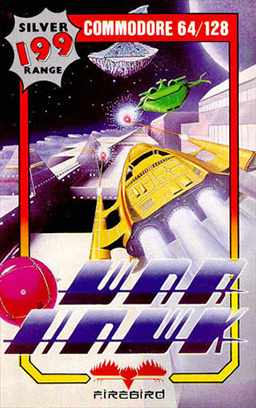
Warhawk is a vertically scrolling shooter published in 1986 by Firebird software. It was released for the Commodore 64, Atari 8-bit computers, Amstrad CPC, and Atari ST.

Beach Head II: The Dictator Strikes Back is a 1985 video game for the Commodore 64, a sequel to Beach Head, developed and published by Access Software. It was designed by Bruce Carver and his brother, Roger, and was released for the Amstrad CPC, Apple II, Atari 8-bit family, Commodore 64, and ZX Spectrum.

Forbidden Forest is a game designed by Paul Norman, published by Cosmi Corporation in 1983 for the Commodore 64 and Atari 8-bit computers.

Panther is a Commodore 64 game designed and implemented by Peter Adams and published by Mastertronic in 1986. A version for Atari 8-bit computers followed in 1987, then a ZX Spectrum port in 1989. The player pilots a strange-looking aircraft, fighting off hordes of invading flying saucers and rescuing people by landing the craft and waiting for them to board. The game uses a diagonally scrolling isometric view, much like Zaxxon and Blue Max, using shadows to show the height of flying objects. Adams previously worked on ports of both of those games.

The Real Ghostbusters is a 1987 shoot 'em up arcade game developed and published by Data East. It is loosely based on Ghostbusters. In Japan, Data East released it as a non-Ghostbusters arcade game under the title Meikyuu Hunter G. In 1989, Activision published The Real Ghostbusters for Amiga, Amstrad CPC, Atari ST, Commodore 64, and ZX Spectrum.

Judge Dredd is a 1991 platform shoot 'em up video game based on the character of the same name. It was developed by Random Access and published by Virgin Mastertronic. It was released in Europe in 1991, for the Amiga, Atari ST, Commodore 64, and ZX Spectrum. Critics found the gameplay repetitive.




















